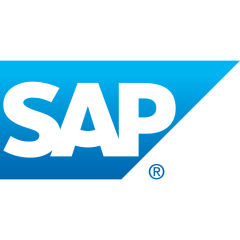What is our primary use case?
Primarily, my customers are using the solution for integration. There is so many possible scenarios. For example they are using RFC, IDOC, BAPI like SAP based protools and Database (JDBC), SOAP, File, Mail(SMTP) or REST API integrations. All these adapters are used bi-directionally, enabling a large number of synchronous and asynchronous integrations.
In addition, it offers different complicated solutions with extensive adapters such as expanded B2B, SalesForce and EDI etc...
What is most valuable?
There are multiple adapters and they are very good/native with SAP. There's a File/FTP/SFTP adapter, JDBC adapter, B2B (EDI) adapter, SOAP, REST.
The solution provides very good and central logging systems. It offers high flexibility with vertical and horizontal extend capacity. It means; each node or cluster added horizontally is put into use fully effectively. Likewise, all the RAM and CPU added vertically are allocated according to the need and put into use.
The PO package has about eight or nine products inside it. Like SAP PI, BRM, BPM; so it's quite extensive.
What needs improvement?
The solution could be more customizable. It's customizable, however, it's underdeveloped. It supports custom modules, custom adapters, etc. but they need more time to truly develop them.
It would help if the solution offered flexible adapters like REST adapters or some custom solution. It would help make it a more flexible product.
In terms of technical support, it would be helpful if they handled the tickets a bit faster when queries are sent to them.
For how long have I used the solution?
I've been using the solution for ten years. I'm still working with it currently. Also have an senior level team in my own company that i manage.
What do I think about the stability of the solution?
The solution is very stable. In fact, it's amazingly stable. It's never shut down on us and we haven't witnessed any problems with the stability at all.
What do I think about the scalability of the solution?
There are a lot of adapters, including non-SAP adapters. It's a good middleware product.
Typically the clients who have SAP are quite sizable companies. For us, some of the biggest companies in Turkey use this solution, so it can handle quite large organizations.
How are customer service and support?
I've contacted technical support in the past when we found some errors in the product. Their support is based on a ticketing system. Usually, I get the answers I require. Occasionally they can be slow, but overall they're very good. We're quite satisfied with the level of service provided by them.
How would you rate customer service and support?
How was the initial setup?
The initial setup was straightforward. It's not complex. Previously, in older versions, it was very complex, but now it can be installed in one day or maybe even over the course of a half-day. They've really worked to simplify things. It could potentially take a maximum of two days to deploy, but no more than that.
It only takes about one to two people to deploy the solution. To maintain the solution, typically my clients might need one or two people.
What about the implementation team?
We have freelancers that assist with deployment and handle other tasks. I'm a freelancer as well.
What's my experience with pricing, setup cost, and licensing?
If you get a PO license, you have PI, BPM, BRM, etc. All of these tools can come in PO, or can be available in a single package under a single license.
The licensing is based on a yearly contract. It is usually licensed per core, but may vary by country.
Some B2B or custom adapters may cost extra, but other adapters are included in the cost and free.
What other advice do I have?
I have my own SAP installation on my local server but I'm not using it on production items. I'm just consulting with my customers on their production environment.
I'd rate the solution eight out of ten. If the solution was more flexible and offered external monitoring features I would rate it higher. The PI portion of the system is quite flexible, but I've had very complex integrations and had to develop an adaptive modem. It needs some more time to really come into its own.
I'd recommend the product to others. It's very stable and you can use it for SAP and non-SAP integrations.
Which deployment model are you using for this solution?
On-premises
If public cloud, private cloud, or hybrid cloud, which cloud provider do you use?
Other
Disclosure: I am a real user, and this review is based on my own experience and opinions.














Thank you for sharing your view and experience on Process Orchestration.